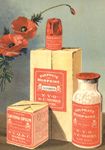Drug development: Which advances had the most impact
Pharmacists could argue for days over what has been the most significant therapeutic advancement in the past 150 years. Some might consider antibiotics to have had the biggest impact in preventing the spread of bacterial infections, while others could argue that vaccines have had a similar effect.

Whatever your beliefs, we would probably all agree that the development of new drugs over the years has completely changed the face of therapeutics. And during the past 150 years, while Drug Topics was diligently trying to deliver the latest drug information to the country's pharmacists, one statistic was constantly changing-that of life expectancy.
In 1900, the average person lived 47 years. Today, that number is 77-an increase of 30 years of life, and an improvement that was realized in only about 100 years' time. Incredible! Of course, it wasn't only drugs that led to this increase. Public health advances, improvements in surgery, and lifestyle changes all played their part, but drug therapy has had a major impact, without a doubt.
Going back 150 years to when Drug Topics was in its infancy takes us to 1857, a pre-Civil War period. Virtually no drug regulation existed, and, therefore, good R.Ph.s spent their time attempting to locate and purchase ingredients that were of good quality. Pharmacists typically purchased raw materials that then required manipulation into something that could be used to fill a prescription. Druggists, as they were called then, bought raw materials from wholesalers or importers. Almost nothing was available in a form that could simply be dispensed. In what often resembled a chemistry lab, pharmacists frequently took botanicals and treated them with water to form an infusion or alcohol to create a tincture. Often these preparations required heating to concentrate them into fluid or solid extracts.
These preparations required time. Liquids were dispensed much as they are today, in bottles or vials; however, the seal was often a piece of cork that had been soaked in water and then squeezed on a cork press and pushed into the neck of the bottle. Oral solids were often just dispensed as powders at the time, and tablets and capsules were not common. "Pills," as they were called, were prepared from a mixture that resembled cookie dough and cut on a pill tile. Cut pieces were often then dusted with licorice root powder or arrow root to prevent sticking. Some pharmacists coated their pills with gelatin to mask the taste, or even silver or gold flakes!
At that point in history, pharmacists "were mostly treating patients' symptoms since we did not know the causes for most diseases," Harris pointed out. "Alcohol was used for pain; opium and morphine were used for dysentery during the Civil War and for pain later in the century. Purgatives and tonics were also very popular, the latter of which contained opiates and large amounts of alcohol." "Other popular drugs during the late 1800s included cinchona bark, its derivative quinine, and mercury compounds," added Gregory J. Higby, R.Ph., Ph.D., executive director of the American Institute of the History of Pharmacy (AIHP).
The practicing pharmacist was required to use complex formulations to compound most prescriptions. Most pharmacists received their training through apprenticeships and very little, if any, formal education. Pharmacy itself was viewed as more of a trade than a profession; however, advancements were made slowly but surely.